- Home
- Charles Dickens
Selected Short Fiction Page 3
Selected Short Fiction Read online
Page 3
As the title of one piece, ‘Meditations in Monmouth-Street’, suggests, the narrator sometimes allows us to follow the progress of his thinking and occasionally captures the very moment when this thinking bursts the confines of actuality:
We have gone on speculating in this way, until whole rows of coats have started from their pegs, and buttoned up, of their own accord, round the waists of imaginary wearers; lines of trousers have jumped down to meet them; waistcoats have almost burst with anxiety to put themselves on; and half an acre of shoes have suddenly found feet to fit them, and gone stumping down the street ...
Dickens’s fascination with interior mental processes emerges strikingly in the short writings. The extended description of the thoughts of the criminal ‘spending his last night on earth’ which enters Boz’s mind in ‘A Visit to Newgate’ anticipates the macabre vignettes in ‘Lying Awake’, a description moving, in its insomniac narrator’s words, by ‘association of ideas’ through a ‘train of thoughts as I lay awake’. In this remarkable piece, as Harry Stone has pointed out,l Dickens experiments with techniques similar to those of the modem interior monologue; his experiments become even more daring as the Uncommercial Traveller fuses fragments of a popular song with his recollections of boyhood reading and his current reactions to a rough crossing of the English Channel in ‘The Calais Night-Mail’:
What may be the speciality of these waves as they come rushing on, I cannot desert the pressing demands made upon me by the gems she wore, to inquire, but they are charged with something about Robinson Crusoe, and I think it was in Yarmouth Roads that he first went a seafaring and was near foundering (what a terrific sound that word had for me when I was a boy!) in his first gale of wind. Still, through all this, I must ask her (who was she I wonder!) for the fiftieth time, and without ever stopping. Does she not fear to stray, So lone and lovely through this bleak way, And are Erin’s sons so good or so cold, As not to be tempted by more fellow-creatures at the paddle-box or gold? Sir Knight I feel not the least alarm, No son of Erin will offer me harm, For though they love fellow-creature with umbrella down again and golden store, Sir Knight they what a tremendous one love honour and virtue more: For though they love Stewards with a bull’s eye bright, they’ll trouble you for your ticket, sir - rough passage to-night! !
The subject of such pieces is not only the impressions of their narrator but the twists and turnings of his mind as these impressions are formed.
Moreover, Dickens’s experiments with first-person narrative as a tool for revealing mental processes were by no means confined to his impressionistic sketches, and the virtuoso pieces grouped under the heading of ‘Dramatic Monologues’ contain some of his most fascinating explorations of the inner sources of human nature. Dickens’s skill at creating characters is proverbial; some, like Scrooge, have made their way into the dictionary. As readers have noted with some dismay, however, the outstanding characters in Dickens’s novels often seem to dwarf their surroundings. Virginia Woolf’s acid comment that ‘Dickens made his books blaze up, not by tightening the plot or sharpening the wit, but by throwing another handful of people upon the fire‘m contains some truth. G. K. Chesterton observed more charitably, ‘the units of Dickens, the primary elements, are not the stories, but the characters who affect the stories - or, more often still, the characters who do not affect the stories’.n Chesterton’s remark is overstated; individuals as diverse as Pip in Great Expectations and Pecksniff in Martin Chuzzlewit have a strong effect on the plots of the novels in which they appear. Nevertheless, it is difficult to deny the fundamental role of characterization in Dickens’s art, and many of the people whom Dickens creates possess astonishing vocal powers. Characters like Mrs Gamp in Martin Chuzzlewit and Flora Finching in Little Dorrit exist largely in terms of what they say. Curiously enough, Flora and Mrs Gamp often seem to talk not to their ostensible listeners but to themselves, and their absorption in their own words appears, in less extreme form, in other figures in Dickens’s novels. George H. Ford has commented, in a discussion of David Copperfield, ‘There are times when Dickens’s characters do not seem to be talking to each other but at each other, like people at parties in America, especially at crowded cocktail parties, where conversation is made up of a cacophony of non-intersecting soliloquies, each speaker isolated and alone.’o In the monologues which comprise the third major category of Dickens’s short fiction, this sense of isolated soliloquy is intensified. Plot recedes into the background, other characters disappear into the wings, leaving a solitary obsessive conversationalist of the type contained in Dickens’s novels.
In marked contrast to the observant personality who presides over the impressionistic sketches, narrators like Doctor Marigold and the ‘blighted public character’ of ‘His Brown-Paper Parcel’ are unique individuals. Unlike the first-person speakers in uncanny pieces such as ‘The Signalman’ and ‘A Confession Found in a Prison in the Time of Charles the Second’, these narrators are not simply vehicles for revealing some abnormal or unnatural event. Rather, they are preoccupied with bringing their distinctive existences into general view. Mrs Lirriper, the widowed keeper of a London boarding house, introduces herself in her second monologue in a passage that briefly rivals the free associations of Joyce’s Molly Bloom:
Being here before your eyes my dear in my own easy-chair in my own quiet room in my own Lodging House Number Eighty-one Norfolk-street Strand London situated midway between the City and St James’s - if anything is where it used to be with these hotels calling themselves Limited but called Unlimited by Major Jackman rising up everywhere and rising up into flagstaffs where they can’t go any higher, but my mind of those monsters is give me a landlord’s or landlady’s wholesome face when I come off a journey and not a brass plate with an electrified number clicking out of it which it’s not in nature can be glad to see me and to which I don’t want to be hoisted like molasses at the Docks and left there telegraphing for help with the most ingenious instruments but quite in vain - being here my dear I have no call to mention that I am still in the Lodgings as a business hoping to die in the same and if agreeable to the clergy partly read over at Saint Clement’s Danes and concluded in Hatfield churchyard when lying once again by my poor Lirriper ashes to ashes and dust to dust.
Whether their words flow glibly like Doctor Marigold’s or stumble hesitantly like George Silverman‘s, their utterances reveal the texture of their minds. We see not only the daily events of their lives, but also their unconscious foibles and faults. The affectations and self-interestedness of the incomparable waiter in Somebody’s Luggage are minor weaknesses, but those of his irrepressible younger counterpart in the railroad refreshment room at Mugby Junction verge upon juvenile delinquency. The Boy at Mugby thoroughly enjoys preying upon society, and he revels in his chosen occupation as ‘a most highly delicious lark’. He depicts his exploits with such gusto, nevertheless, that it is impossible to deny him the kind of sympathy which Dickens himself must have felt when he signed a letter to his friend Thomas Beard ‘The Boy (at Mugby)’. In such pieces, Dickens approaches the problem of conflicting evaluations of a speaker’s words explored by his contemporary Robert Browning in some of his best poems, and he encourages ‘the tension between sympathy and moral judgement’ which Robert Langbaum has described as the hallmark of the dramatic monologue.p Like a comic version of the duke in Browning’s ‘My Last Duchess’, the Boy at Mugby possesses, in Langbaum’s terms, a ‘hard core of character fiercely loyal to itself’;q he displays his outrageous attitude with such unfaltering confidence that a reader hesitates to condemn him as he deserves. Other narrators of these monologues by Dickens are not so zestfully reprehensible. Mrs Lirriper’s wandering thoughts, minor jealousies, and uneducated errors are a far cry from the Boy’s high-spirited determination to ‘Keep the Public Down’. Whatever response Dickens’s speakers ultimately elicit, however, their words reveal their own fanciful and idiosyncratic perspective on their audience’s everyday world.
The
se extraordinary monologues are often bypassed in critical examinations of Dickens because of the unusual circumstances under which most of them were written. Except for ‘George Silverman’s Explanation’, all the ones included in this selection appeared in the extra Christmas numbers of All the Year Round. These special publications, which Dickens began with Household Words, were initially simple affairs; the number for 1850, in which ‘A Christmas Tree’ appeared, is merely a regular issue whose contents deal with the subject of Christmas. Subsequently, however, the Christmas number became a separate and increasingly elaborate publication, and Dickens gradually hit upon a scheme, which Scheherazade might well have envied, for enclosing contributions by other authors within his own words. His procedure was to outline a principal narrative which formed usually, but not always, the first and last chapters of the Christmas number; this framing narrative gave some excuse for interpolated pieces from other contributors and occasionally from Dickens himself. By 1862, this basic format had become well established, and Somebody’s Luggage, the Christmas number for this year, playfully pokes fun at Dickens’s contributors and his own activities as editor of All the Year Round; as he wrote to Wilkie Collins, it was designed as ‘a comic defiance of the difficulty of a Xmas No., with an unexpected end to it’.
The difficulties which Dickens experienced in producing his Christmas numbers still plague those who wish to evaluate his contributions; they are usually reprinted out of their original contexts in editions of Dickens’s collected works, where they sometimes seem oddly constructed and mysterious. Consequently, the selections reprinted here are presented as self-contained portions of larger works. They consist of the framework and one of the two pieces which Dickens introduced into Somebody’s Luggage as well as the frameworks of Mrs Lirriper’s Lodgings, Mrs Lirriper’s Legacy, and Doctor Marigold’s Prescriptions. ‘Main Line. The Boy at Mugby’ is one of his additions at the end of the major narrative of Mugby Junction (his other added piece, ‘No. 1 Branch Line. The Signalman‘, is included under ‘Tales of the Supernatural’). In these dazzling contributions, Dickens triumphed over the annual challenges of the Christmas number.
Moreover, Dickens’s work in this genre was not confined solely to the Christmas season. Near the end of his career, in a characterization created before his second visit for initial publication in America, he used the form, even more skilfully, for George Silverman’s hauntingly equivocal explanation.The repeated efforts of this narrator not to be ‘worldly’ have led only to misunderstanding and injustice, and his monologue is a last, despairing effort to explain his own altruistic intentions. At the same time, his remarks and behaviour suggest that he is neurotic, unsocial and self-centred. He is selfishly oblivious to the feelings of the women whose friendship and love he rejects; he is condoning a serious deception when he voluntarily relinquishes his claim to the inheritance appropriated by his self-proclaimed guardian - but this does not disturb him. As in Browning’s ‘Andrea del Sarto’, where the speaker attributes his problems both to his own loving sacrifice and the failure of others to understand him, we see what George Silverman believes and also what he manifests about himself.
His self-portrait at the farmhouse near the ruined Hoghton Towers, as he observes a youthful birthday celebration which he has refused to attend, illustrates these two facets of his personality:
Ah! If they could have seen me next day in the ruin, watching for the arrival of the cart full of merry young guests; if they could have seen me at night, gliding out from behind the ghostly statue, listening to the music and the fall of dancing feet, and watching the lighted farm-house windows from the quadrangle when all the ruin was dark; if they could have read my heart as I crept up to bed by the back way, comforting myself with the reflection, ‘They will take no hurt from me,’ - they would not have thought mine a morose or an unsocial nature!
On first glance, this series of imagined pictures merely demonstrates Silverman’s growing diffidence and his willingness to sacrifice his own happiness to protect those for whom he cares, but, on second glance, the words of his description reveal disturbing connotations. The young girl whom he admires, and avoids because he tells himself that she might catch the fever of which his parents died, would hardly have felt easy if she could have seen him’ gliding out from behind the ghostly statue’, peeping at her birthday festivities from the darkened ruin, and furtively creeping up the stairs to his bed. Had the farmer who scolds him for not being sociable literally been able to read the boy’s heart, he undoubtedly would have wondered why George Silverman did not discuss his fear of contamination openly, or at least find a brighter alternative to the party than Hoghton Towers after dark. Silverman himself considers the episode a significant one, and he uses it as an analogy for the later life which he recalls at college:
I can see others in the sunlight; I can see our boats’ crews and our athletic young men on the glistening water, or speckled with the moving lights of sunlit leaves; but I myself am always in the shadow looking on. Not unsympathetically, - God forbid! - but looking on, alone, much as I looked at Sylvia from the shadows of the ruined house, or looked at the red gleam shining through the farmer’s windows, and listened to the fall of dancing feet, when all the ruin was dark that night in the quadrangle.
The thought of himself as ‘always in the shadow looking on’ indicates the angle from which he gathers his impressions of life. Like a voyeur, he shrinks from involvement yet maintains that he intends no harm.
Ultimately, however, the conflicting evaluations evoked by this monologue are juxtaposed so subtly that they cannot be definitively resolved. Silverman presents his view of his life persuasively, and final judgement of his personality remains in doubt; awareness of his limitations is balanced by compassion for his dilemma. In this work, Dickens has presented one of his favourite and generally admirable situations - that of self-sacrificing renunciationr - but
From Gabriel Grub’s reformed conviction that ‘it was a very decent and respectable sort of world after all’ to George Silverman’s anguished perception that the world he so steadfastly renounces is neither understanding nor just, the short writings included here reveal Dickens’s increasingly pessimistic preoccupation with the problems of dwelling in society and the divisions within the individual self. Viewed from one direction, they reflect the growing loss of illusions familiar to readers of his later novels, yet they also reveal startling flashes of comic, holiday exuberance with late characters from the Christmas numbers like the Boy at Mugby and Mrs Lirriper or Doctor Marigold, the inherently generous lover of material possessions, conceived just after the sombre manifestations of human greed in Our Mutual Friend. Forster remarked about Doctor Marigold’s monologue that ‘It expressed, as perfectly as anything he has ever done, that which constitutes in itself very much of the genius of all his writing, the wonderful neighbourhood in this life of ours, of serious and humorous things; the laughter close to the pathos, but never touching it with ridicule.’ In varying ways, this assessment suggests the most important element of his friend’s short fiction. Here, far more freely than in his novels, Dickens felt himself able to unleash the unique combination of talents which formed ‘the genius of all his writing’, to arouse pathos, to evoke laughter, and to attempt to hold the two in equilibrium. Here he showed most intensely the quality of fancy, which he never firmly defined yet sensed as a primary aspect ofhis art.Thus, he felt quite free to escape momentarily from actuality or soften it with emotion, to transform fact through the power of a perceiving eye, and to experiment with techniques of narrating perspectives on the ordinary world. In the process, he explored corners of the human mind — penetrating, as all our nightmares and daydreams do, beyond the realm of possible experience, capturing evanescent impressions of the moment, demonstrating the way in which our personalities are inexorably manifested in our words. At their best, the results not only illuminate the novels that have paradoxically overshadowed them; they are multicoloured lights which are fascinating in th
emselves.
SELECT BIBLIOGRAPHY
THE standard biographies of Dickens are those by Peter Ackroyd, Dickens (London: Sinclair-Stevenson, 1990); John Forster, The Life of Charles Dickens, ed. J. W. T. Ley (London: Cecil Palmer, 1928); Edgar Johnson, Charles Dickens: His Tragedy and Triumph, 2 vols. (New York: Simon and Schuster, 1952); and Fred Kaplan, Dickens: A Biography (New York: William Morrow, 1988). The most comprehensive collection of Dickens’s letters is the twelve-volume Pilgrim Edition, edited by Madeline House, Graham Storey and others, and published by the Clarendon Press, Oxford (1965-2002). Some of the short pieces included in the present selection also appear in the four-volume Dent Uniform Edition of Dickens’ Journalism, edited by Michael Slater, with John Drew in the last volume, published in Great Britain by J. M. Dent (1993-2000) and in the United States by Ohio State University Press. The following studies offer useful insights from diverse directions into the subject of Dickens’s short fiction.
BARRY D. BART, “‘George Silverman’s Explanation”’, Dickensian, vol. 60 (1964), pp. 48-51.
JOHN BUTT, ‘Dickens’s Christmas Books’, Pope, Dickens and Others (Edinburgh: Edinburgh University Press, 1969), pp. 127-48.
JOHN BUTT and KATHLEEN TILLOTSON, Dickens at Work (London: Methuen, 1957). This is a discussion of Dickens’s methods of composition which includes a chapter dealing with his revisions to Sketches by Boz.
G. K. CHESTERTON, Charles Dickens (London: Methuen, 1906).
P[HILIP] A. W. COLLINS, ‘Queen Mab’s Chariot Among the Steam Engines: Dickens and “Fancy”’, English Studies, vol. 42 (1961), pp. 78-90.

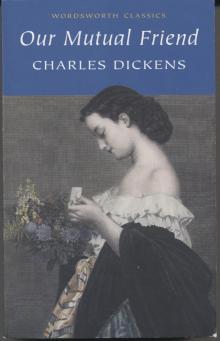 Our Mutual Friend
Our Mutual Friend_preview.jpg) The Posthumous Papers of the Pickwick Club, v. 1 (of 2)
The Posthumous Papers of the Pickwick Club, v. 1 (of 2)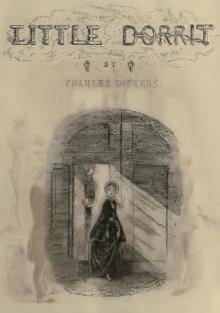 Little Dorrit
Little Dorrit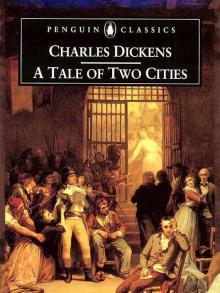 A Tale of Two Cities
A Tale of Two Cities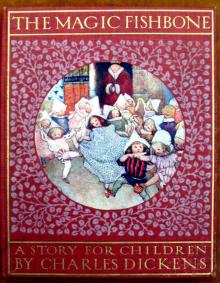 The Magic Fishbone
The Magic Fishbone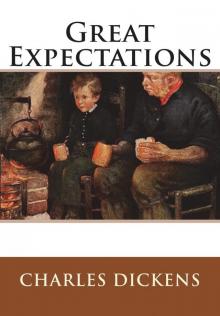 Great Expectations
Great Expectations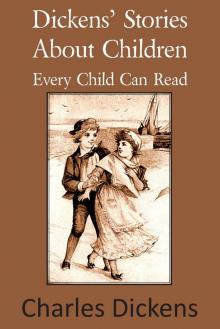 Dickens' Stories About Children Every Child Can Read
Dickens' Stories About Children Every Child Can Read A Christmas Carol
A Christmas Carol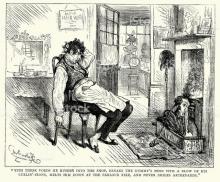 Master Humphrey's Clock
Master Humphrey's Clock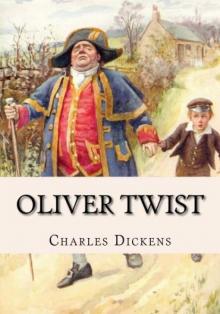 Oliver Twist
Oliver Twist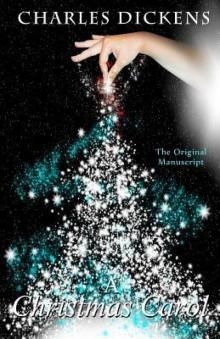 A Chrismas Carol
A Chrismas Carol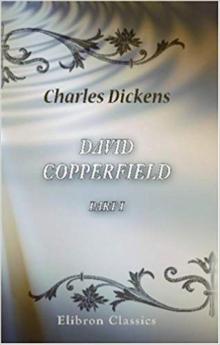 David Copperfield
David Copperfield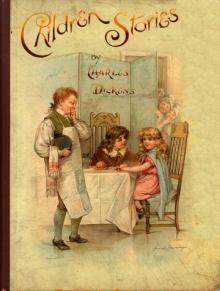 Charles Dickens' Children Stories
Charles Dickens' Children Stories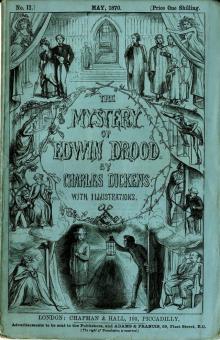 The Mystery of Edwin Drood
The Mystery of Edwin Drood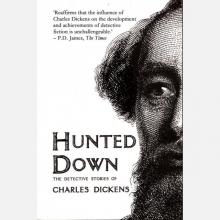 Hunted Down: The Detective Stories of Charles Dickens
Hunted Down: The Detective Stories of Charles Dickens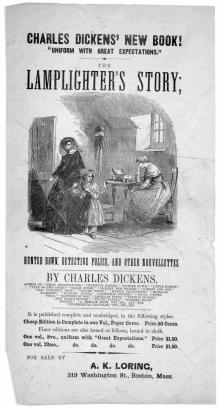 The Lamplighter
The Lamplighter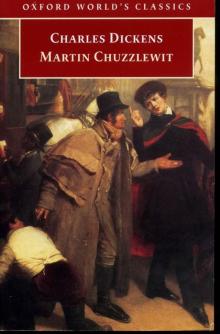 Martin Chuzzlewit
Martin Chuzzlewit_preview.jpg) The Posthumous Papers of the Pickwick Club, v. 2 (of 2)
The Posthumous Papers of the Pickwick Club, v. 2 (of 2)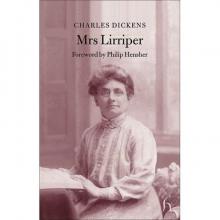 Mrs. Lirriper's Legacy
Mrs. Lirriper's Legacy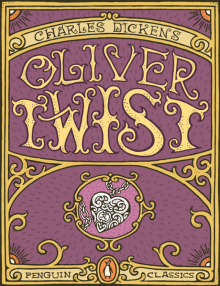 Captain Boldheart & the Latin-Grammar Master
Captain Boldheart & the Latin-Grammar Master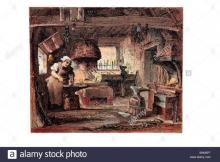 Barnaby Rudge: A Tale of the Riots of 'Eighty
Barnaby Rudge: A Tale of the Riots of 'Eighty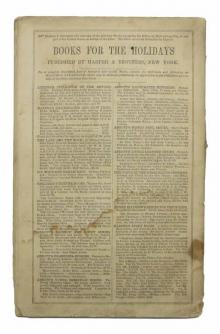 Mrs. Lirriper's Lodgings
Mrs. Lirriper's Lodgings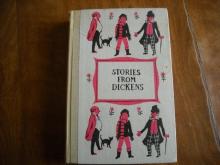 Stories from Dickens
Stories from Dickens The Mudfog Papers
The Mudfog Papers Bardell v. Pickwick
Bardell v. Pickwick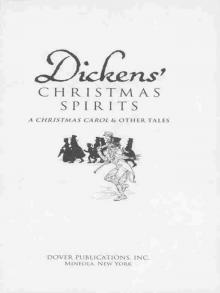 Dickens' Christmas Spirits
Dickens' Christmas Spirits A Christmas Carol, the Chimes & the Cricket on the Hearth
A Christmas Carol, the Chimes & the Cricket on the Hearth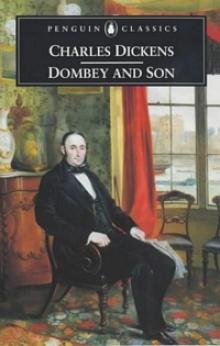 Dombey and Son
Dombey and Son Hunted down
Hunted down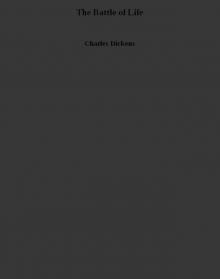 The Battle of Life
The Battle of Life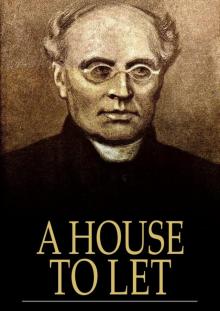 A House to Let
A House to Let Works of Charles Dickens (200+ Works) The Adventures of Oliver Twist, Great Expectations, A Christmas Carol, A Tale of Two Cities, Bleak House, David Copperfield & more (mobi)
Works of Charles Dickens (200+ Works) The Adventures of Oliver Twist, Great Expectations, A Christmas Carol, A Tale of Two Cities, Bleak House, David Copperfield & more (mobi)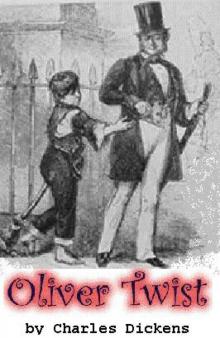 The Adventures of Oliver Twist
The Adventures of Oliver Twist The Charles Dickens Christmas MEGAPACK™
The Charles Dickens Christmas MEGAPACK™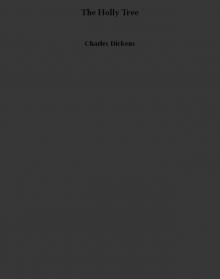 The Holly Tree
The Holly Tree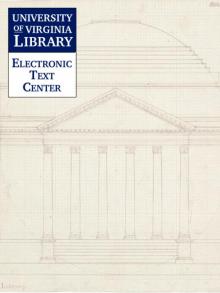 The Haunted Man and the Ghost`s Bargain
The Haunted Man and the Ghost`s Bargain Life And Adventures Of Martin Chuzzlewit
Life And Adventures Of Martin Chuzzlewit A Message From the Sea
A Message From the Sea Holiday Romance
Holiday Romance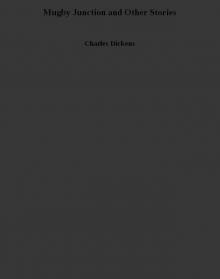 Mugby Junction and Other Stories
Mugby Junction and Other Stories Sunday Under Three Heads
Sunday Under Three Heads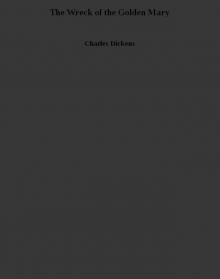 The Wreck of the Golden Mary
The Wreck of the Golden Mary Sketches by Boz
Sketches by Boz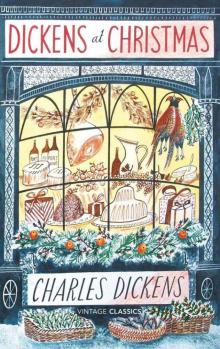 Dickens at Christmas (Vintage Classics)
Dickens at Christmas (Vintage Classics) All The Year Round
All The Year Round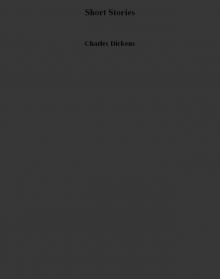 Short Stories
Short Stories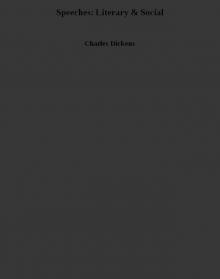 Speeches: Literary & Social
Speeches: Literary & Social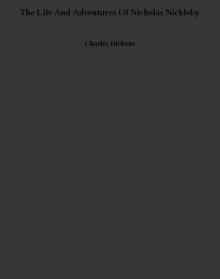 The Life And Adventures Of Nicholas Nickleby
The Life And Adventures Of Nicholas Nickleby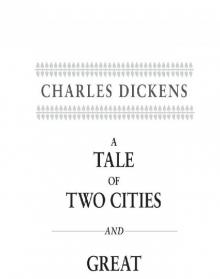 A Tale of Two Cities and Great Expectations (Oprah's Book Club)
A Tale of Two Cities and Great Expectations (Oprah's Book Club)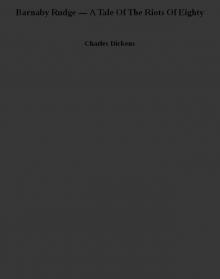 Barnaby Rudge — A Tale Of The Riots Of Eighty
Barnaby Rudge — A Tale Of The Riots Of Eighty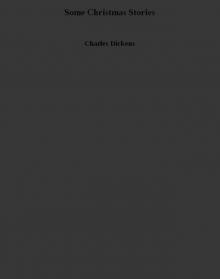 Some Christmas Stories
Some Christmas Stories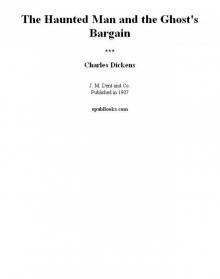 The Haunted Man and the Ghost's Bargain tc-5
The Haunted Man and the Ghost's Bargain tc-5 The Charles Dickens Christmas Megapack
The Charles Dickens Christmas Megapack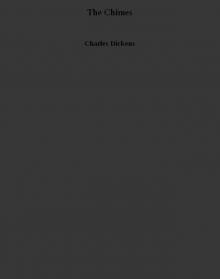 The Chimes
The Chimes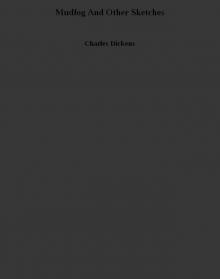 Mudfog And Other Sketches
Mudfog And Other Sketches Miscellaneous Papers
Miscellaneous Papers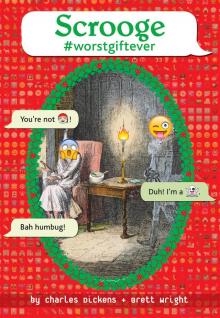 Scrooge #worstgiftever
Scrooge #worstgiftever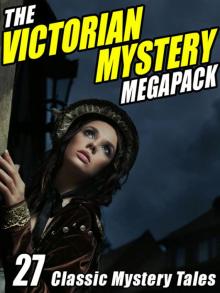 The Victorian Mystery Megapack: 27 Classic Mystery Tales
The Victorian Mystery Megapack: 27 Classic Mystery Tales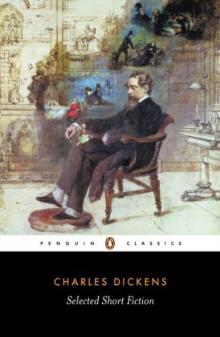 Selected Short Fiction
Selected Short Fiction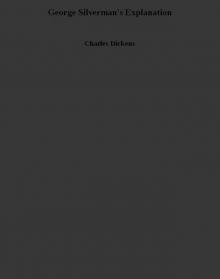 George Silverman's Explanation
George Silverman's Explanation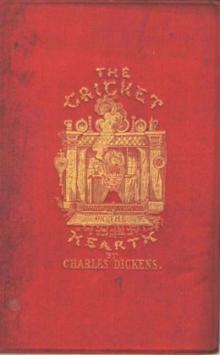 The Cricket on the Hearth c-3
The Cricket on the Hearth c-3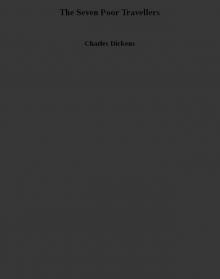 The Seven Poor Travellers
The Seven Poor Travellers Doctor Marigold
Doctor Marigold Three Ghost Stories
Three Ghost Stories